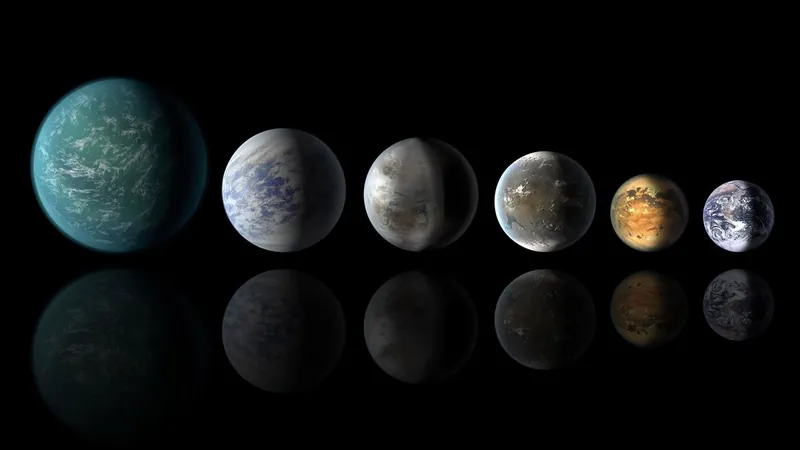
Unlocking the Secrets of Alien Water Worlds: How Lava and the James Webb Space Telescope Could Change Everything!
2024-11-15
Author: John Tan
Introduction
Scientists may be on the brink of a groundbreaking method to identify water-rich exoplanets beyond our solar system by studying the minerals found in cooled lava. This innovative approach rests on the intriguing interplay between fresh lava and water. When water comes into contact with cooling lava, it can catalyze the formation of distinct minerals, leaving clues that could lead researchers to hidden liquid water sources—either on the surface or within the rocky subsurfaces of these distant worlds.
Volcanic Activity and Exoplanets
This fascinating research assumes that some exoplanets contain cooled lava, suggesting a history of volcanic activity. Fortunately, the universe seems to favor this hypothesis; our very own solar system hosts evidence of volcanic activity on various bodies, including Mercury, Earth's Moon, and Jupiter's moon Io. It's likely that any rocky exoplanet has also experienced volcanic processes at some stage of its life.
Using the James Webb Space Telescope
A research team recently compiled an extensive database that outlines how these minerals in cooled lava could be analyzed using the James Webb Space Telescope (JWST), one of the most advanced tools in modern astronomy. They chose to spotlight basalt, a prevalent rock that forms as lava cools upon a planet's surface. Basalt is not just common in our solar system; its formation is inherently tied to volcanic activity found throughout the galaxy.
The Significance of Basalt
Esteban Gazel, a Cornell University engineer and co-author of the study, emphasized the significance of basalt, noting, "Most exoplanets will produce basalts." He explained that the chemical properties of stars hosting these exoplanets indicate their potential to create basalt lava: "It will be prevalent not only in our solar system but throughout the galaxy, too."
Minerals and Spectral Signatures
But what can basalt reveal? When water interacts with cooling lava, minerals like amphibole and serpentine can form—minerals that are also observable in volcanics on Earth. Each of these has a unique spectral signature that can be captured by the JWST. By measuring the light emissions from these minerals, astronomers can piece together a planet's geological and hydrological history.
Experimental Findings
The research team conducted experiments to measure the spectral data of 15 different basalt samples from varying terrestrial environments. They used this data to simulate how it would appear if it originated from an exoplanet named LHS 3844b, situated approximately 48 light-years from Earth. The JWST's Mid-Infrared Instrument (MIRI) will be pivotal in interpreting these signatures.
Future Implications
Gazel noted, "By examining small spectral differences between the basalt samples, scientists can theoretically ascertain whether an exoplanet had historical surface water or water reservoirs beneath its crust."
Challenges Ahead
However, the wait for scientists to use this extensive spectral database may be lengthy. Capturing the spectrum of lava flows on a distant world is a time-consuming process, requiring dozens or even hundreds of hours of JWST observation time. Given the high demand and limited availability of the telescope, astronomers often find themselves with just a few precious hours to investigate their targets.
Conclusion
Stay tuned, as this revolutionary study could very well reshape our understanding of where to find water beyond our planet—one mineral signature at a time! Keep your eyes on the cosmos; our extraterrestrial neighbors may be closer than we think!


 Brasil (PT)
Brasil (PT)
 Canada (EN)
Canada (EN)
 Chile (ES)
Chile (ES)
 España (ES)
España (ES)
 France (FR)
France (FR)
 Hong Kong (EN)
Hong Kong (EN)
 Italia (IT)
Italia (IT)
 日本 (JA)
日本 (JA)
 Magyarország (HU)
Magyarország (HU)
 Norge (NO)
Norge (NO)
 Polska (PL)
Polska (PL)
 Schweiz (DE)
Schweiz (DE)
 Singapore (EN)
Singapore (EN)
 Sverige (SV)
Sverige (SV)
 Suomi (FI)
Suomi (FI)
 Türkiye (TR)
Türkiye (TR)